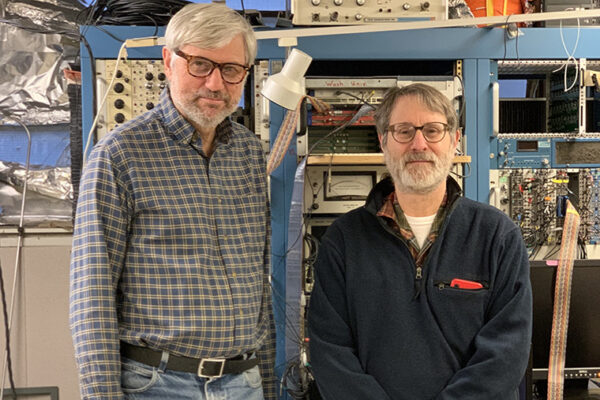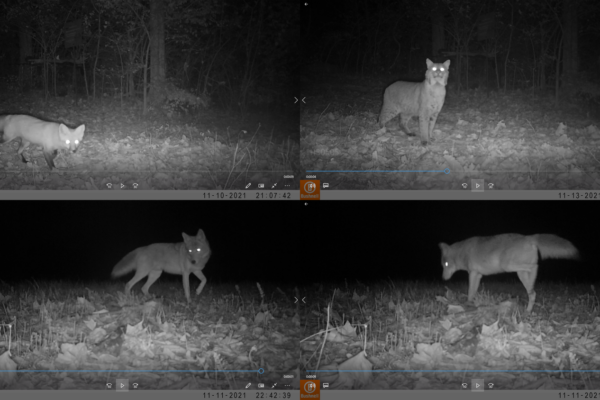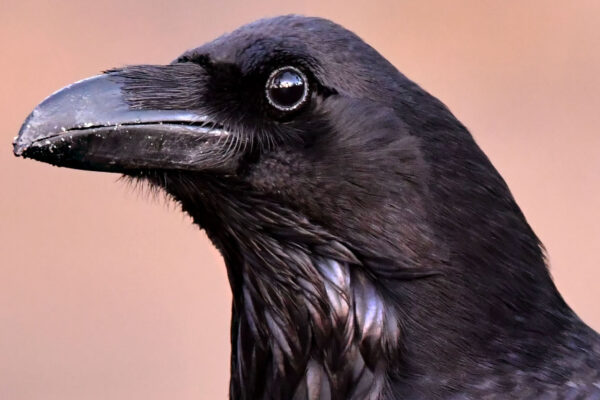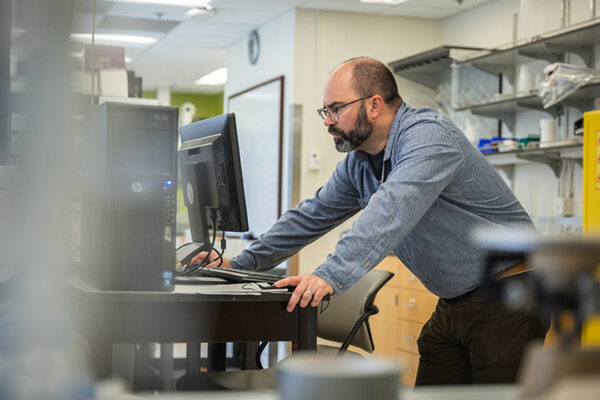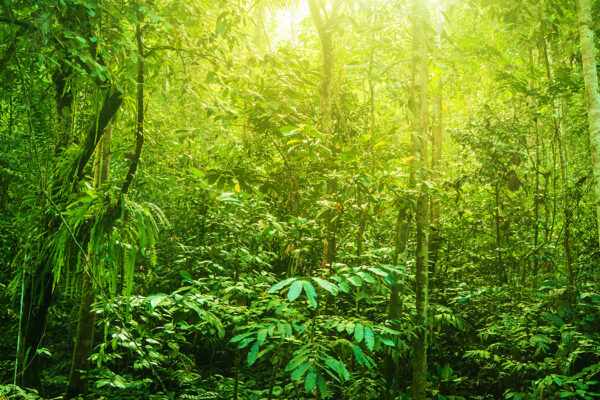Going green: Five ways Dining Services is making your lunch more sustainable
From reducing waste to cooking with local produce, Dining Services at Washington University in St. Louis is striving to make its offerings and operations more sustainable. This Earth Day, Andrew Watling, associate director of dining operations, shares five ways campus kitchens are making a difference.
Novel particle detector used to study alternate path to carbon creation in stars
A team that includes Lee Sobotka and Robert Charity, both in Arts & Sciences, concluded that the role that neutrons play in the creation of carbon, considered the definitive building block of life, is much smaller than previously thought.
WashU researchers help identify national priorities for planetary science
William B. McKinnon and Paul Byrne, both in Arts & Sciences at Washington University, played important roles in developing a report from the National Academies of Sciences, Engineering, and Medicine. It identifies scientific priorities and funding recommendations to maximize the advancement of planetary science in the next decade.
Bersi wins American Heart Association Career Development Award
Matthew Bersi, assistant professor at the McKelvey School of Engineering, will use tools from engineering and biology to investigate blood vessel stiffening from high blood pressure with a three-year $231,000 Career Development Award from the American Heart Association.
Washington University joins effort to launch Taylor Geospatial Institute
Washington University in St. Louis is among eight research institutions that came together to help launch the Taylor Geospatial Institute, a hub for big data analytics and computing.
Jez installed as Spencer T. Olin Professor of Biology
Joseph Jez was installed as the Spencer T. Olin Professor of Biology in Arts & Sciences during a ceremony April 4 in Holmes Lounge. He gave an installation lecture, “Exploring Nature’s Machinery.”
Canid conservation program launched
Washington University in St. Louis and the Living Earth Collaborative are part of a new Missouri-based conservation initiative led by the Saint Louis Zoo. Working with the Endangered Wolf Center, scientists are looking to answer ecological and health-related questions about canids — red foxes, gray foxes and coyotes — as well as bobcats, which live in close association with canids.
Brains and brawn helped crows and ravens take over the world
Crows and ravens have great flying ability, which allows them to gain access to new places more easily. While their flying skills were key to their success, new research from biologists in Arts & Sciences also shows that big bodies and big brains played an important role in helping crows and ravens survive in the new climates they occupied.
From rare soil microbe, a new antibiotic candidate
Demand for new kinds of antibiotics is surging, as drug-resistant and emerging infections are becoming an increasingly serious global health threat. Biologist Joshua Blodgett in Arts & Sciences discovered a new candidate for drug development from bioactive compounds in a soil bacterium. The findings are reported in the Proceedings of the National Academy of Sciences.
Changes in vegetation shaped global temperatures over last 10,000 years
Alexander Thompson, a postdoctoral research associate in earth and planetary sciences in Arts & Sciences, updated simulations from an important climate model to more accurately reflect the role of a greener Sahara and the coniferous and deciduous forests of the mid-latitudes and the Arctic.
Older Stories

